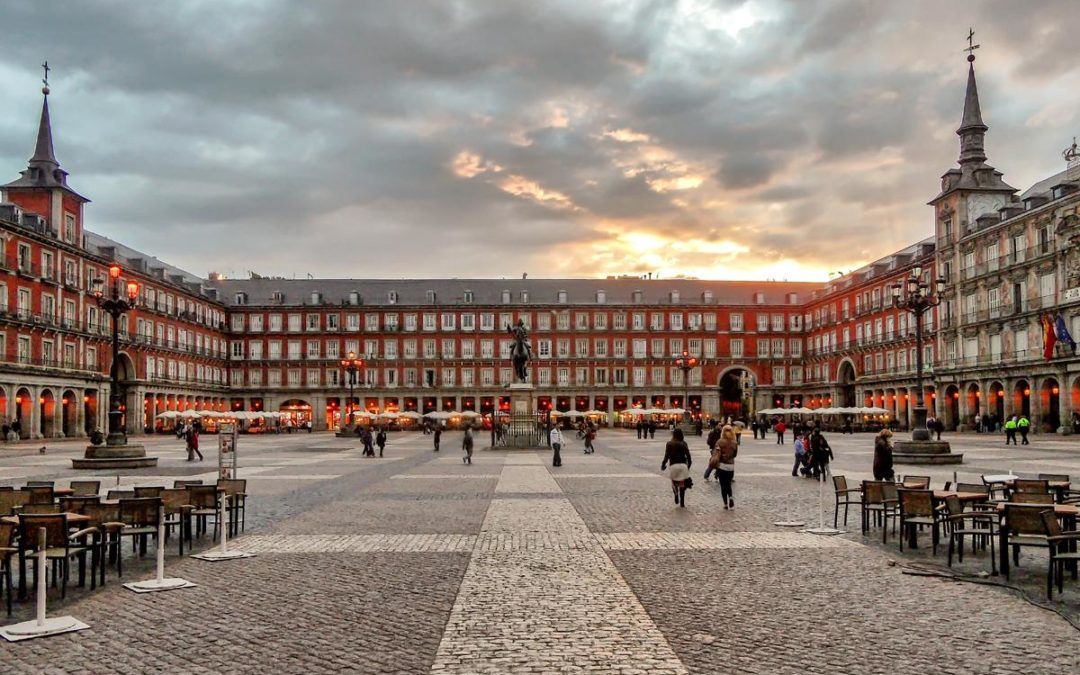Trip to Madrid

Tips for preparing your trip to Madrid
Madrid, a city with more than 25,000 years of history located in the heart of Spain, offers the best gastronomic, cultural, and entertainment experiences for couples, friends, and families. Madrid has it all! That is, as long as you plan ahead and have the best tips from this practical guide for your trip.
Well, here are 8 tips for your trip. Let yourself be enveloped by the charm of Madrid:
1. Best time to travel to Madrid: summer or winter?
Madrid has four distinct seasons: spring, summer, fall, and winter. Although many prefer the summer season, there are those who also prefer the coolness of spring or plan low-cost trips in winter. If you are someone who enjoys the heat more than the cold, July or August are your best options, but be aware that the thermometer can reach 40 degrees Celsius. If you are someone who enjoys a temperate climate more, May or June are your best options. The bright colors in the parks and the daylight will make your stay a fresh and unique experience. If you are a fan of the cold, we recommend enjoying the Christmas season and holidays in Madrid, with the traditional lighting of the lights or the 12 chimes that herald the new year in Sol.
2. How to get from the airport to the center of Madrid
- Metro Line 8: You can take it from any of the four terminals. Take line 8 towards Nuevos Ministerios. The cost is €5 plus €2 for the rechargeable card. The estimated travel time is 20 minutes. From this station, you can take commuter trains that will drop you off at Puerta del Sol, specifically lines C3 or C4.
- Line C1 Train: This is the commuter train to Chamartin. The cost is €2.60, and the estimated travel time is 15 minutes. From Chamartin, you can take lines C3 and C4, which will drop you off at Sol in 20 minutes.
- Express Bus: For €5, you can take the Express Bus to Atocha or Cibeles station. The estimated travel time is 40 minutes. From there, you can take metro line 1 or the local train to Puerta del Sol.
- Taxi: You can request a taxi through apps such as Bolt or Uber. The approximate price is €30.
3. Where to stay in Madrid.
To begin with, it is always a good idea to take precautions when traveling during the high season, i.e., from June to September, as you will need to book your accommodation in advance. We recommend hotels, hostels, or Airbnbs near the center of Madrid, specifically Puerta del Sol, as these will allow you to quickly get around the historic district and enjoy the day without long train rides. Areas such as Malasaña, Chueca, or Gran Vía.

4. Transportation in Madrid
Madrid has one of the best transportation networks, so getting around will not be a problem. To move around the city, you can use the metro. The rechargeable card costs €2.50, and a single ticket costs between €1.50 and €2, depending on the number of stops to your destination. We recommend purchasing a 10-trip pass, which can be used by several people at the same time and is also a good way to save money. The metro line runs from 6 a.m. to 1:30 a.m., so you’ll have the freedom to explore the city at night safely.
5. How many days do I need to enjoy my trip to Madrid?
Although there are guides on how to enjoy Madrid in one day, our suggestion is that you experience Madrid on a trip lasting at least two or three days. Don’t miss out on the history, enjoying different attractions such as a tour of the Prado Museum or discovering the famous Royal Palace of Madrid, as well as trying the best tapas while enjoying a beer on a rooftop bar offering unique views of the city.
6. What to eat in Madrid
Another reason to visit Madrid is definitely its cuisine, where tapas are the star of the show. The most traditional dishes you can’t miss are:
- Cocido madrileño: a delicious chickpea stew accompanied by vegetables, meat, and pork fat.
- Callos a la madrileña: a dish made with beef, stewed and served in a clay pot with pieces of chorizo and blood sausage.
- Porras con chocolate: a typical Madrid dessert that can also be accompanied by churros.
- Bocadillo de Calamares: a dish made with squid coated in flour and fried in olive oil.
- Huevos estrellados: fried potatoes, eggs, and pieces of ham, a simple but delicious explosion of flavor.
- Sopa de ajo: sliced and sautéed garlic, pieces of ham, and slices of stale bread.

7. Do you need to exchange money?
If you need to exchange currency, you will find reliable currency exchange offices in the center of Madrid. There are branches of Ria, Western Union, and Euro Exchange. Here is a link where you can see the locations of the offices with the best exchange rates on Google Maps.
8. Opening hours in Madrid
Get used to not finding shops open 24 hours a day. Madrid residents make the most of their days, which is why opening hours are a little different from what we are used to. So take precautions.
SHOPPING:
Shops, offices, and almost all businesses usually close between 2 and 5 p.m. Some businesses also close from 2 to 5 p.m. and then reopen until 8 p.m. Supermarkets are open until 8 or 10 p.m., depending on the store. But don’t worry, you’ll get used to it in no time.
DINNER:
If it’s not 9 p.m. or later, it’s not dinner in Madrid! Madrid usually has lunch at 3 p.m. and dinner after 9 p.m.
Now you’re ready to enjoy your trip. Keep reading, as we’ll continue to post updates for your trip.
